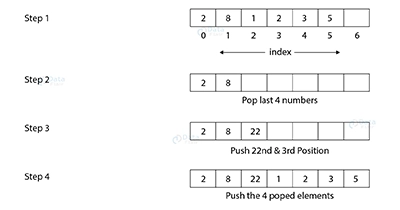Limitations of Array in C
Arrays are one of the most basic data structures used in C programming. An array is a group of identical data-typed objects kept together in memory. Arrays allow easy access to elements based on their index. However, arrays also come with several limitations that programmers should understand.
This article explores the key limitations of arrays in C and why it is important to select the appropriate data structure for different use cases.
Fixed Size and Memory Allocation in C
One of the defining features of arrays in C is that they have a fixed size that needs to be defined at compile time.
For example:
int myArray[100];
This allocates memory for an array of 100 ints. The array size cannot be changed dynamically at runtime. This fixed-size allocation can lead to a waste of memory if we allocate more memory than required. It can also cause buffer overflow vulnerabilities if we write past the bounds of the array.
Lack of Dynamic Sizing
Since arrays have a fixed size, they cannot be resized dynamically at runtime. This causes issues in many real-world programs where the data size is not known beforehand. Examples include user input, data from a file or network, etc. The only solutions are to either allocate a very large array to start with or to reallocate memory as needed. Both these solutions are suboptimal.
// Original array int myArray[10]; // Need a bigger array int *newArray = malloc(20 * sizeof(int)); memcpy(newArray, myArray, 10 * sizeof(int)); free(myArray); myArray = newArray;
As seen above, dynamic reallocation introduces significant programming overhead.
Absence of Bounds Checking
C does not perform bounds checking on arrays. If we try to access myArray[10] for an array of size 10, this will overwrite some other memory without any error. This may result in crashes, security holes, and other difficult-to-find logical flaws. To avoid bound violations, array indexes must be manually checked.
int myArray[10];
for (int i = 0; i <= 10; i++) {
myArray[i] = 0; // Index out of bounds bug
} Technology is evolving rapidly!
Stay updated with DataFlair on WhatsApp!!
Buffer overflow vulnerabilities are a common result of a lack of bounds checking in C. Stack-based and heap-based buffer overflows allow attackers to overwrite return addresses and execute arbitrary code.
Homogeneous Data Types
Arrays in C can only contain elements of one data type – integers, characters, floats, etc. This introduces limitations for programs that need to work with heterogeneous data. Complex data structures are required in such cases as structures and unions.
Inefficient Insertions and Deletions
Due to the need to move elements back and forth in memory, adding and removing elements from an array is wasteful.
For instance:
// Insert element at index 2
for (int i = n; i >= 2; i--) {
myArray[i] = myArray[i-1];
}
myArray[2] = newElement;Insertion and deletion at the end of an array are relatively cheaper. But inserts/deletes in the middle have O(n) time complexity as all elements need shifting.
Fixed Data Alignment
Arrays allocate elements contiguously in memory. This means that each element occupies a fixed slot, and the size of each slot is determined by the data type. There is no flexibility to accommodate data elements with non-standard alignment requirements.
Inflexible Sorting and Searching
The linear contiguous layout of arrays makes certain operations inefficient. Common sorting algorithms like bubble sort, insertion sort and selection sort have O(n^2) time complexity on arrays. The search is limited to linear search with O(n) complexity. More complex data structures can provide much better performance for sorting and searching, like O(log n) for binary search trees and O(1) for hash tables.
Memory Fragmentation
Long-lived arrays that are allocated and freed over time can contribute significantly to memory fragmentation. The free gaps left behind by deleted arrays lead to fragmentation, especially when combined with arrays of different sizes. This reduces the availability of contiguous memory for large array allocations.
Multidimensional Array Limitations
Multidimensional arrays are typically implemented as arrays of arrays. This introduces complexity in memory management as we now need to manage multiple allocations and pointer arithmetic. Other solutions, like a single block of memory, can improve locality but make accessing elements more complex. Dynamic memory allocation provides more flexibility.
Compiler-Dependent Limitations
There are several limitations of arrays that are specific to compilers and platforms. For example – array sizes may have limits based on the target architecture, differing treatment of multidimensional arrays, various alignment and padding behaviors, etc. These can hinder code portability across compilers and platforms.
Workarounds and Best Practices
Here are some tips to work around array limitations:
- Allocate conservatively to start, realloc as needed
- Enforce bounds checking even if a language doesn’t enforce it
- Limit array size and use other data structures like linked lists when size is unknown
- Use memory pools and reuse freed arrays to reduce fragmentation
- Use standard libraries and language-provided constructs for portability
In general, it is best to use the right data structure for your program’s needs instead of blindly using arrays.
Conclusion
Arrays are a basic but limited data structure in C. They provide fast indexed access but lack flexibility in memory allocation and reorganization. Understanding these limitations helps developers choose the most efficient and robust data structure for the problem at hand, whether it be an array, linked list, hash table, tree, etc. Mastering data structures and algorithms is key to becoming an expert C programmer.
If you are Happy with DataFlair, do not forget to make us happy with your positive feedback on Google



